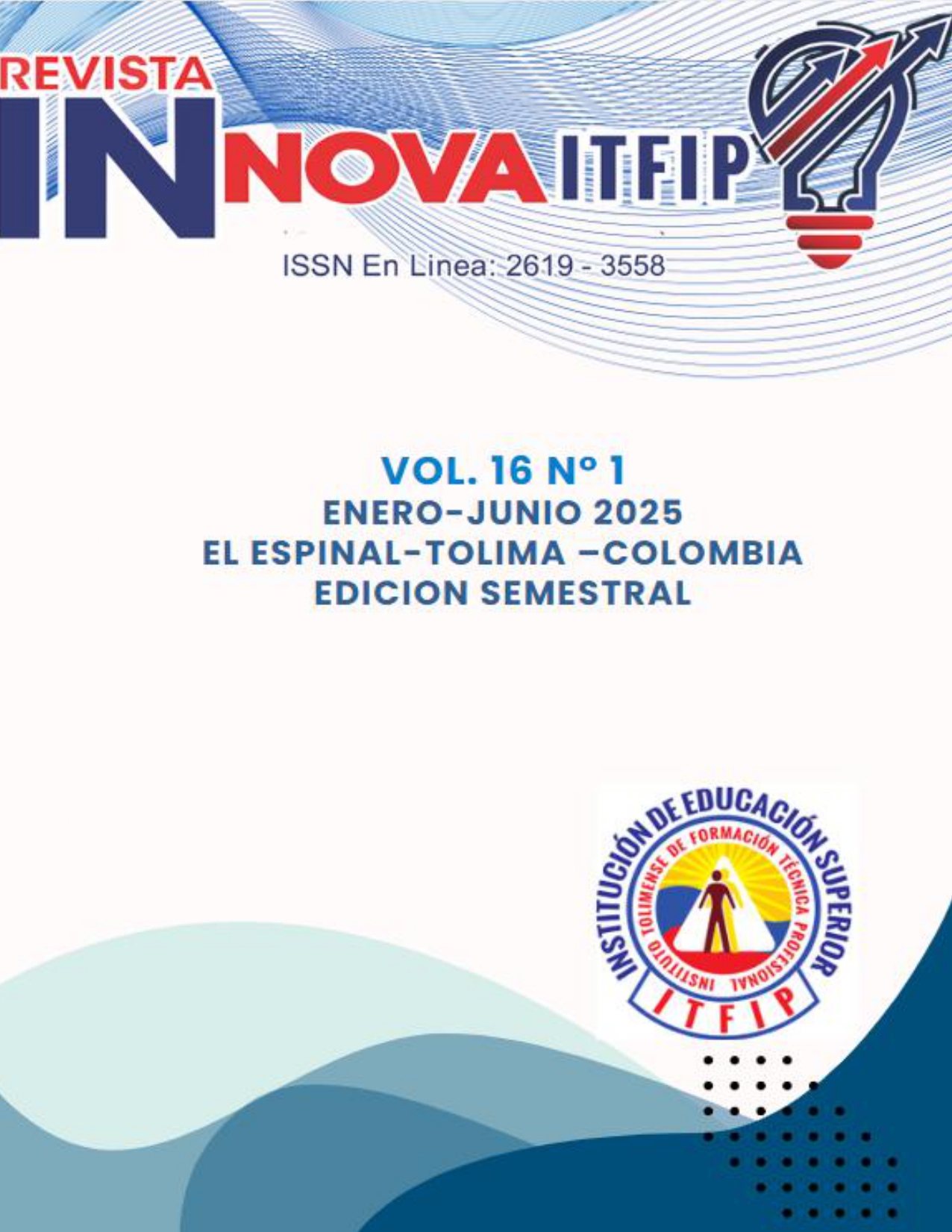Pedagogical practices through virtual learning environments (vles) and their impact on the acquisition of spanish as a second language in the united states
Sonia M. Bruno González
DOI: https://doi.org/10.54198/innova16.06
Keywords: Didactics practice, educational exploration, teacher preparation – research, language acquisition, virtual learning environments-VLE, teaching second language
Abstract
This research analyzes the impact of pedagogical practices mediated by Virtual Learning Environments (VLE) on the investment of Spanish as a second language (L2) in educational circumstances in the United States. In an increasingly digital and multicultural environment, the integration of educational technologies has become a key strategy to respond to the lingual and cultural distinctiveness of students, especially in foreign language teaching programs.
The study is based on a combining approach between qualitative and quantitative methods to examine both teachers' perceptions and students' performance in virtual environments. The results show that VLEs, when integrated with pedagogical intentionality, favor the development of language competencies through interactive resources, collaborative learning strategies, and constant feedback. Tools such as forums, videoconferences, conversational simulators and educational platforms allow students to refine their comprehension, oral and written production in Spanish.
Likewise, there is evidence of an improvement in the motivation, autonomy and loyalty of students when the internships are contextualized and respond to their linguistic and cultural needs. However, important challenges are also identified: the digital divide, teacher training in the didactic work of technologies, and the need to adjust content to different levels of competence.
In conclusion, pedagogical practices through VLE represent an effective tool for teaching Spanish as L2, as long as they are articulated with a solid instructional design and planning aimed at achieving significant learning. This inquiry contributes to the apprehension of the prospective of virtual environments in language teaching and offers practical guidelines for their implementation in diverse educational contexts.
Downloads
References
Acuña Gamboa, L. A., y Mérida Martínez, Y. (2025). Instituto Nacional de Evaluación de la Educación: Una mirada crítica a su nueva función. Revista mexicana de investigación educativa, 20(66), 985-991. Agudelo, J. (2020). Entering the Mainstream: The Quality and Extent of Online Education in the United States, 2003 and 2004. Sloan Consortium. PO Box 1238, Newburyport, MA 01950.
Área-Moreira, M. (2012). La educación digital: Nuevos retos y posibilidades.
Bruner, J. S. (1996). La educación, puerta de la cultura. Gedisa.
Byram, M. (1997). Teaching and assessing intercultural communicative competence. Multilingual Matters.
Bruner, J. (1997). La educación, puerta de la cultura
Caballero, M. (2023). Metodología de la lengua extrajera. Código PD:082115. Publicado 2017-4-25.
Cabero, J., & Llorente, M. C. (2008). La aplicación del e-learning en la formación permanente del profesorado. Pixel-Bit. Revista de Medios y Educación, (33), 29–40.
Canale, M., & Swain, M. (1980). Theoretical bases of communicative approaches to second language teaching and testing. Applied Linguistics, 1(1), 1–47.
Coll, C., Mauri, T., & Onrubia, J. (2008). Análisis de los usos reales de las TIC en contextos educativos formales: una aproximación psicopedagógica. Revista Electrónica de Tecnología Educativa, (25), 1–12.
Ellis, R. (2003). Task-based language learning and teaching. Oxford University Press.
Flores Beltran, D. E., y González Del Pezo, J. V. (2024). La pedagogía constructivista en el desarrollo cognitivo de niños de 4 a 5 años (Bachelor's thesis, La Libertad: Universidad Estatal Península de Santa Elena, 2024).
García Aretio, L. (2020). Educación a distancia y virtual: Fundamentos, bases y teorías.
Gómez-García, L. M., Gutiérrez-Santiuste, E. y Moreno-López, I. (2021). La videoconferencia: Recurso educativo para promover la comunicación intercultural entre los estudiantes. Revista de Currículum y Formación del Profesorado, 25(2), 213-236. https://doi.org/10.30827/profesorado.v25i2.8265
González-Lloret, M., & Ortega, L. (2014). Technology-mediated TBLT. John Benjamins.
Hampel, R., & Stickler, U. (2015). Developing online language teaching: Research-based pedagogies. Palgrave Macmillan.
Hidalgo, J., y Aliaga, S. E. (2020). Análisis de las estrategias didácticas para el diseño, selección, producción, utilización y validación de recursos educativos audiovisuales interactivos en una institución educativa. Estudio inicial. Revista Electrónica de Investigación y Docencia (REID), 23, 79-98. https://doi. org/10.17561/10.17561/reid. n23.5
Johnson, D. W., Johnson, R. T., & Smith, K. (2014). Cooperative learning: Improving university instruction by basing practice on validated theory.
Leiva, J. (2023). La interculturalidad a través de las TIC: Un proceso de aprendizaje en red. Revista Didáctica, Innovación y Multimedia, 25, 1-13.
Kramsch, C. (1998). Language and culture. Oxford University Press.
Martinez, G. (2022). Heritage languages: Language acquired, language lost, language regained. Annual Review of Linguistics, 9(1), 399-418.
Mayer, R. E. (2009). Multimedia learning (2nd ed.). Cambridge University Press.
Pavia, G. y Muñoz, G. F. R. (2024). Integración de la tecnología y la pedagogía en los sistemas
detutoría inteligente. Edutec, Revista Electrónica De Tecnología Educativa, (89), 144- 155.
Piaget, J. (1970). La psicología de la inteligencia.
Reinders, H., & White, C. (2011). Special issue: The theory and practice of autonomy in language learning with technology. Computer Assisted Language Learning, 24(1), 1–3.
Rodríguez, A., & Pérez, I. (2017). El enfoque por tareas en el aprendizaje de lenguas extranjeras mediante plataformas digitales. Educación y Tecnología, 12(3), 45–60.
Salinas, J. (2018). Innovación educativa y TIC en la universidad. Selinker, L., & Bentmar, X. (2023). Two perspectives on fossilization in interlanguage learning. Interlanguage Studies Bulletin, 143-191.
Tumino y Bournissen, J. M. (2020). Integración de las TIC en el aula e impacto en los estudiantes: elaboración y validación de escalas. International Journal of Educational Research and Innovation (IJERI), 13, 62-73. ISSN: 2386-4303
Valenzuela, M, Huerta Rosales, M., & Penadillo Lirio, R. (2017). Construcción del currículo universitario con enfoque por competencias: Una experiencia participativa de 24 carreras profesionales de la UNASAM. Revista Iberoamericana de Educación.
Vanderlinde, Ruben y Van Braak, Johan. (2010). “The e-capacity of primary schools: Development of a conceptual model and scale construction from a school improvement perspective”, Computers & Education, vol. 55, núm. 2, pp. 541-53. https://doi.org/10.1016/j.compedu.2010.02.016
Vygotsky, L. S. (1978). Mind in society: The development of higher psychological processes. Harvard University Press.
Vygostky, Lev. (2010). Pensamiento y lenguaje, Buenos Aires, Paidós.
Warschauer, M., & Kern, R. (2000). Network-based language teaching: Concepts and practice. Cambridge University Press.





